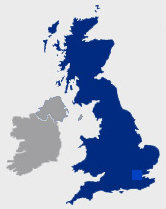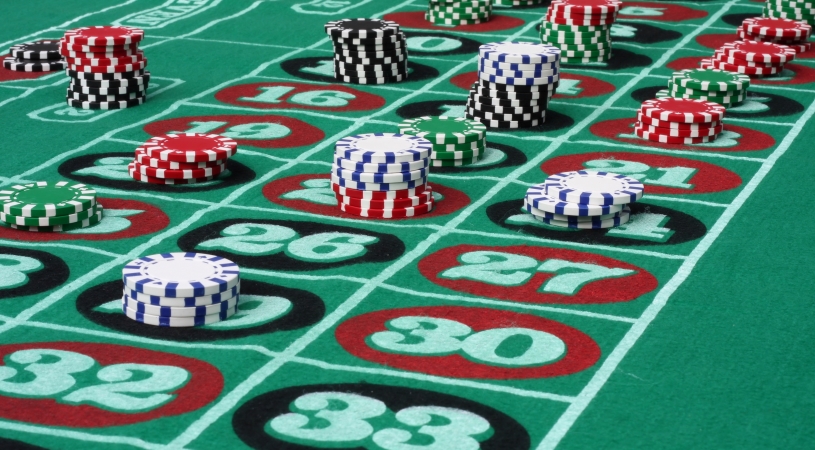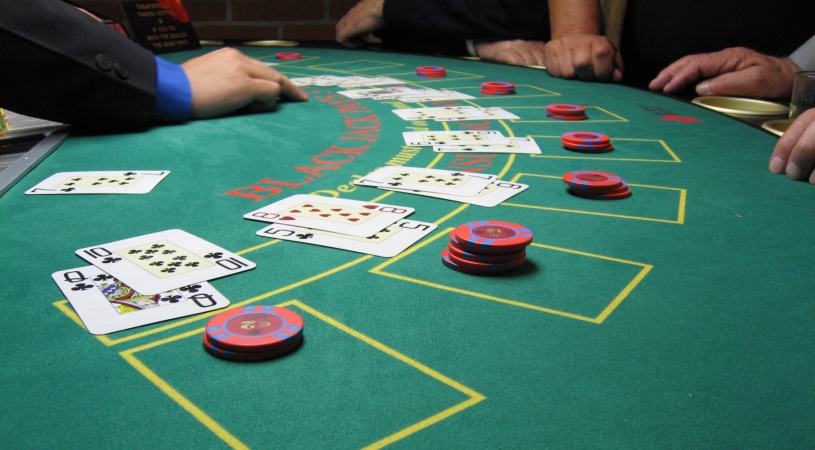Playing the tables for beginners
So, you’ve followed our first timers guide, and made it into a casino for the first time. Probably you hit the bar, had a sharpener or two, and now you fancy a little dabble on those inviting – yet slightly scary – gaming tables. Here’s a basic guide to get you started – we’ll go into more detail by game in the future.
Firstly, pick your game. As noted in the first timers column, Three Card poker can be a pretty easy game to get into, but here we’ll have a quick overview of the three most popular games – more detail in future posts, for sure.
Roulette
Roulette is responsible for the lion’s share of the action in the UK, and plenty of people will be familiar with the game from playing it in bookies on those machines (officially called FOBTs – Fixed Odds Betting Terminals). Casinos have the same machines, and they can be a good way to get used to the game before trying the tables.
If, however, you want to get straight into the action, head for a table with a bit of space and get your cash out. Wait for the dealer to look like he has a spare second – it’s poor form to throw your money across while the ball is spinning – and put the cash on the table (dealers don’t like to take cash from your hand, they’re trained not to for security reasons). Roulette is somewhat unique in that it has two different types of chips. You can use the same chips you use on the other games – cash chips, with the value printed on the chip itself – but with lots of people betting all over the numbers, it is tricky for the dealer to figure out whose chips are whose. That’s why when you buy in the dealer will ask (or assume) if you want “colour chips”. In this situation, you get our own colour – say blue – and decide what value they are. For example, if you buy in for £20, if the chips are worth 50p each you’ll get 40, if they are worth £1 each you’ll get 20. The dealer will usually assume you want them at the minimum value of the table, which will be written on the table signs somewhere.
From there you just place your chips wherever you like. We’ll have a more detailed guide to where you can bet in a future post, but a couple of things to remember – stop betting when the dealer calls “no more bets” – this means the ball is slowing down and about to stop – and when you are finished at the table, ask the dealer to “cash out”. This doesn’t mean you get folding cash, the tables don’t store money, but the dealer will change all of your colour chips for cash chips and then, in turn, you can turn these cash chips into cash at the cash desk.
Blackjack
Everyone’s familiar with how the basics of Blackjack work, with dealer and player trying to get as close as they can to 21 without going over (busting). It’s a pretty easy game to get into, too, although the downside is that if you take a card (or not) when other players thing you shouldn’t have, you’ll get evil glares and occasionally comments. Balls to them, play it your way …
Buying in is simple enough, again just put your money on the table. The dealer will usually give you the most appropriate change in chips, so if you are in for £50 on a £2 table, they might give you 30 x £1 chips and 4 x £5 chips. If you want anything different just ask. The table minimum will be displayed somewhere on the table for your convenience.
Next, once the previous hand is finished, put your stake in the “box” – confusingly named since it’s often a circle – just follow the leads of the other players. There are usually lots of side bet options on the table too, but maybe leave these until you have the basic game figured out. Next comes the initial deal – the dealer will deal everyone out two cards plus one for themselves (in the US – and most other countries – they deal two for themselves, of which one is face down).
Then you’re into the business end of matters, deciding whether to take cards or not. Forget “stick” and “twist”, here we use “stand” or “card”, or hand signals also work – tap the table for another card, wave your hand flat to stay where you are. There are other options too – doubling and splitting – but we’ll touch on those in a later post. Suffice to say you want to get as close as possible to 21 without going over. The simplified version of strategy is that the dealer’s card is critical – if they have a crappy card like a 2,3,4,5 or 6, you don’t want to take a risk and are better off standing once you get to 12. If they have a good card (7,8,9,10, face card or Ace) then you need to gamble, and don’t stop taking cards until you get 17 or more.
Once the last player has drawn all the cards they want (the dealer works from their left to their right) they will draw their own cards – taking them until they hit 17 or more, or bust. They’ll then pay the winner, take the losers, and any ties just stay where they are (a “push” or “stand-off”).
Check the future Blackjack specific post for more detail, and bear in mind there are a few new variants of Blackjack that work a little differently – take a close look at the table signage so as not to get caught out.
Three Card Poker
Three Card Poker – or TCP – is a very simple game to get into. There are often a couple of side bets (although not on the photo below), but the two basic bets are the simplest to deal with – we’ll cover some of the side bet options in a post dedicated to this game.
As with the other games, just buy in at the table for cash chips by putting your money on the table. Once you get your stack, look at the sign or ask the dealer about the table minimum. To get started, wait for the previous hand to end and place your chips on either the “Pair Plus” spot or the “Ante” spot (or both once you’ve figured it all out). They’re two quite different bets, and we’ll go with the simplest first.
The Pair Plus is a simple bet as to whether you get a good hand or not – a Pair or better (hence Pair Plus). You get your three cards, and if you get a pair, a straight (for example A/2/3, or 5/6/7, or Q/K/A – Aces count high or low) or a flush (three cards of the same suit), you get paid at odds depending on your hand. You might even get a big payout by getting three of a kind or a straight flush (three cards in order of the same suit) in which case you’ll be laughing all the way to the cash desk. In terms of what to actually do, you can pick up your cards when the dealer tells you it’s ok (different casinos have different rules) and simply put them in the “Play” box when you have looked. You can throw them in, next to the bet, if you are sure you’ve no hand, but feel free to let the dealer check by placing them in the Play box.
The Ante bet is a little more complicated, in that you are playing against the dealer. Getting a good hand is key, but it’s most important to beat the dealer’s hand. Once you’ve put your bet on the Ante position, you get three cards. This time you have a decision to make. If you think your hand is good enough, you have to bet again, by putting your cards on the “Play” position and matching your Ante bet, placing the chip(s) on top of the cards.
Then, once all the players have made their decisions, the dealer reveals their cards. At this point they either “qualify” or they don’t. If they fail to qualify, then all Play bets get refunded, and only the Ante gets paid. Bummer. However, if they do qualify, and they do this by having a hand with a Queen or better (ie a King, an Ace, or a pair or even better) then they compare their hand to yours, and pay both the Ante and Play if you beat them. They take both if they win, and the only consolation is you get paid the “Ante Bonus” if you get a straight or better – regardless of whether they beat you.
TCP is a great game to play to keep you occupied, and plenty of people like to play both the Pair Plus and Ante / Play bets at once, sometimes along with other side bets.





